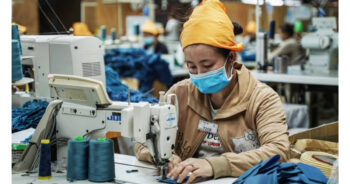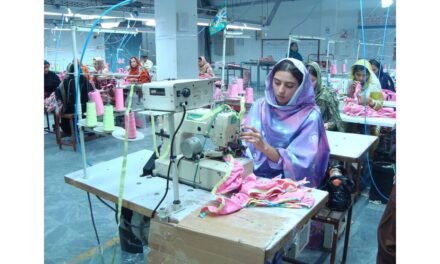 The Cambodian industry is expected to grow by 9.2 percent in 2023 with support from improved external demand that help boost garment and non-garment manufacturing, while the garment sector is expected to grow by 8.1 percent in that year due to demand in the United States, the European Union and the Southeast Asian region, primarily Myanmar.
The Cambodian industry is expected to grow by 9.2 percent in 2023 with support from improved external demand that help boost garment and non-garment manufacturing, while the garment sector is expected to grow by 8.1 percent in that year due to demand in the United States, the European Union and the Southeast Asian region, primarily Myanmar.
The country’s economy will grow by 6.6 percent in 2023, 1.2 percent higher than the projected 5.4 percent this year, supported by better trends of global demand and higher confidence of investors amid the relaxed and controlled COVID-19 pandemic situation, the government said recently while releasing its macroeconomic and budget strategy.
Inflation is estimated to drop to 2.5 percent this year from the projected 5 percent in 2022 as this year the prices of oil and commodities have steeply increased in the international market due to the Russia-Ukraine war and the exchange rate will stay around 4,065 riel against the US dollar, the strategy document stated.
“The government has considered increasing intervention packages to mitigate the impacts of the rising inflation and boost domestic investment to support economic development and creating jobs,” it pointed out.
Foreign direct investment (FDI) for 2022 and 2023 is expected to recover to around 12 percent and 11.6 percent of gross domestic product (GDP) respectively, supported by rising confidence of investors and faster changes in regional and global production and supply chains, report quoted the document as saying.
The recovery of FDI is expected to enable Cambodia’s international reserves to reach about $21 bn, which ensures that the economy would be able to import for a period of 7.7 months in 2022 and around $22 bn in 2023. The current account deficit is expected to further narrow to about 14.1 percent of GDP in 2023 from 26.8 percent this year.
The economy in 2023 will need support mainly from agriculture, which is projected to rise by 1.1 percent with strong progress in animal raising, plantation and fisheries sub-sectors as exporting agricultural products, especially mixed and agro-industrial commodities is expected to rise.
“However, the agriculture sector will still face structural challenges such as low growth of soil and labour productivity, limited supporting infrastructure, weak commercialisation and diversification of agriculture and shortage of investment in processing to gain value-added,” a government statement said.





















